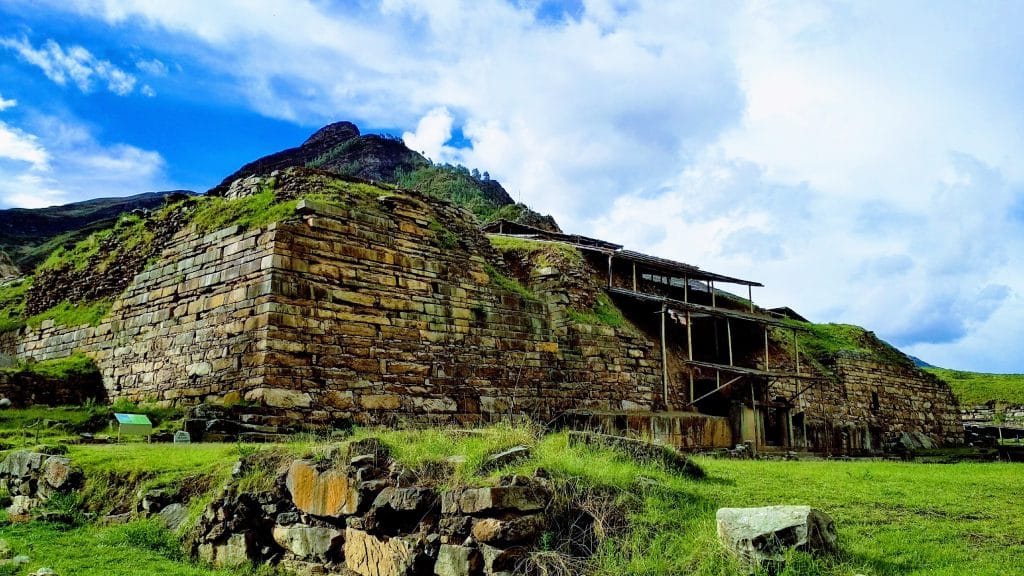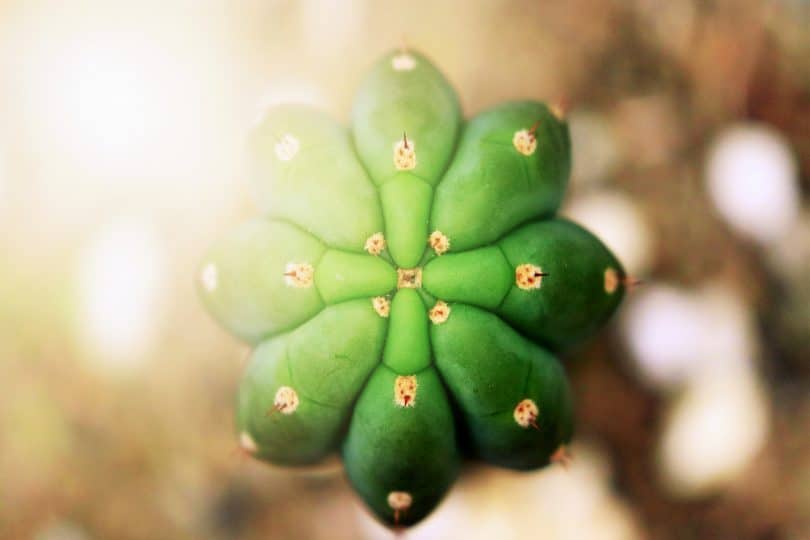When most people think of mescaline, peyote cactus is what generally comes to mind. Peyote, which was somewhat popularized in the 1970s (think Jim Morrison tripping in the desert), is illegal to cultivate, possess, or consume in the United States, unless you’re a member of the Native American Church.
Luckily, many other plants contain mescaline, and one of the more popular alternatives to peyote is yet another species of cactus from Peru that also has thousands of years of cultural and historical use under its belt: the San Pedro cactus.
To stay current on everything important happening in the industry, subscribe to The Cannadelics Weekly Newsletter. Also, it’ll get you premium access to deals on cannabis flowers, vapes, edibles, and much more! We’ve also got standout offers on cannabinoids, like HHC-O, Delta 8, Delta 9 THC, Delta-10 THC, THCO, THCV, THCP & HHC, which won’t kill your bank account. Head over to our “Best-of” lists to get these deals, and remember to enjoy responsibly!
What is San Pedro Cactus?
San Pedro (Trichocereus/Echinopsis pachanoi) is a tall, thin flowering columnar cactus that hails from the Andes Mountain region of South America. It is also referred to as aguacolla, cardo, cuchuma, gigantón, hermoso, huando, and Peruvian torch. It grows well in the Southwestern US, as far north as Colorado, although it truly thrives in California and Arizona, where it can be seen with regularity in residential areas and shopping centers.
San Pedro contains mescaline, but unlike peyote, it’s not very strictly regulated – in the United States or globally. Additionally, it’s one of the longest-studied psychedelics, as well as the first cactus to be labeled with the term (psychedelic). San Pedro has a long history of use in various indigenous cultures – for both spiritual and medicinal aims. Traditionally, San Pedro can be consumed either on its own or mixed with other plants in a psychedelic, ceremonial brew called cimora.
Today, San Pedro can be obtained with relative ease, regardless of where you are in the world. You can buy it online from websites that ship to numerous countries (including the United States). In South America, particularly Peru, Bolivia, and Ecuador from where the plant originates, San Pedro can be found at “witches’ markets”, also known as El Mercado de las Brujas and La Hechiceria.
More About Mescaline
Mescaline is a naturally occurring, plant-based psychedelic protoalkaloid belonging to the phenethylmine class. It’s known for its powerful hallucinogenic properties, comparable to those of LSD and psilocybin. In addition to Peyote, mescaline can be synthesized from a few other cactus species as well such as the San Pedro cactus (Echinopsis pachanoi), the Peruvian torch (Echinopsis peruviana), and others.
A common dose for mescaline is roughly 200 to 400 mg, depending on the person’s size, level of experience with the compound, and other factors. Traditionally, San Pedro dosing is calculated at roughly 3.75 mg/kg of weight. However, potency can vary wildly from cactus to cactus, so it can be quite difficult to get consistency in dosing. For example, 50 grams of powdered cactus can have anywhere from 150 mg to 1,150 mg of mescaline. Factors such as where and how the cactus grew (the plant’s terroir) and access to water and sunlight can influence the plant’s potency.
Mescaline binds to virtually all serotonin receptors in the brain but has a stronger affinity for the 1A and 2A/B/C receptors. It’s structurally similar to LSD and often used as a benchmark when comparing psychedelics. Proper brain function is dependent on accurate signaling between these receptors.
Some History About San Pedro
San Pedro cactus has a long history of use that can be traced back to the pre-Columbian Chavin culture that developed in Peru between 1300 to 200 BCE. This is evidenced by numerous stone carvings depicting mythical beings holding San Pedro cacti, the oldest of which was discovered in an old temple at Chavin de Huantar in the northern highlands of Peru. Numerous other artifacts from the region bore San Pedro symbolism as well, and perhaps the most concrete proof of its use are the 3,000-year-old cactus cigars found in the same cave as the carvings.
San Pedro has been used therapeutically and ceremoniously throughout South America for over 3,000 years and can be obtained at stores, farmers markets, and “witches’ markets” in the region. Originally, it was known as Huachuma, but European settlers renamed it San Pedro, after Saint Peter who is believed to guard the entry to heaven.

What’s interesting about this, is that the name implies that even the European missionaries knew the plant had healing and spiritual properties, despite their over-regulation of indigenous San Pedro use. But because of their strong contempt for native culture, they were very negative in their reporting of plant therapies and ceremonial traditions, and thus, very harsh laws developed against the cultivation and possession of psychedelic plants – San Pedro included.
Regardless, while knowledge and documented information on other plants like peyote and mushrooms was nearly wiped out in many regions, San Pedro managed to stay relatively lowkey and was able to fly under the radar for centuries. A handful of shamans and other spiritual healers continued conducting ceremonies with Huachuma, and in recent years, it has gained popularity in Europe and US as the psychedelic renaissance flourishes in the west.
How to Prepare San Pedro
The standard native preparation of San Pedro consists of boiling slices of the stem for a few hours, then simply drinking the cooled liquid. It was sometimes mixed with other psychoactive plants such as coca, tobacco, Brugmansia, Datura, and Anadenanthera; but more often it was used on its own.
The basic technique has remained comparatively the same over the years, meaning the most effective and common way to prepare San Pedro for consumption is by making a tea. Below is one of the most common methods:

Step 1: Estimate your dose – As previously mentioned, this isn’t always easy to do with entheogens, but based on the somewhat standard measurement of 3.75 mg/kg of weight, you can get a rough estimate of how much cactus you’ll need. A recommended beginner dose is around 200-300 grams of fresh San Pedro.
Step 2: Prepare the cactus – First you will need to remove the spine, but make sure to leave as much flesh intact as possible. Then peel the waxy, translucent outer layer off the cactus, again, leaving as much flesh as you can. Once you do that, you can continue to remove the lighter colored flesh, leaving only the dark green part of the cactus. This isn’t a requirement, but some people believe it helps to prevent nausea. The final step is to break the cactus down into small chunks, either by chopping or using a food processor.
Step 3: Make your tea – Place the cactus bits into a saucepan or slower-cooker. Fill will three times as much water as there is cactus, and cook on low heat for a few hours (6ish). Some people like to add lemon juice to the boil, claiming that it helps with the mescaline extraction. Although this is somewhat common practice, I couldn’t find any solid sources to back up this theory.
Step 4: Remove the bulk and reduce volume – After simmering for some hours, use a strainer or cheesecloth to remove any excess plant material. Then continue simmering for a few more hours to boil out some of the extra water, this will leave you with a more potent final product so you don’t have to drink a ridiculous amount of tea to feel the high.
Step 5: Enjoy or store your tea – Whatever you don’t use right away, you can store in the fridge for up to one week. After that, you can separate it into doses and put it in the freezer, but make sure to split it up first so you’re not defrosting more than you need at one time. You don’t want to defrost and refreeze your San Pedro brew too many times.
How it Feels
Let me start by mentioning that I have not had the opportunity to try it myself (but plan to in the very near future, now knowing how easy it is to obtain San Pedro). That said, it’s described as a powerful empathogen (or entactogen) which can increase feelings of empathy benevolence, overall connectedness with others.
The effects take roughly 15 to 40 minutes to kick in, and usually peak in about 3 hours. San Pedro highs are very long – anywhere from 10 to 16 hours – so make sure to prepare mentally and physically. You can do this by getting in the right set and setting (you don’t want to enter an all-day or all-night psychedelic high being in the wrong state of mind), and making sure to eat a light, healthy meal at some point before your trip (a few hours preferably). Additionally, San Pedro leaves a “lasting afterglow”, similar to psilocybin, so it might be difficult to sleep after you come down – something to prepare for as well.
In higher doses, San Pedro will produce visual distortions that can include flashes of light and color, auras and ghostly outlines around people, and the infamous kaleidoscope effect that is almost standard with these types of substances. One common thread I noticed in the way people describe mescaline, is that many were surprised at how different it felt from other psychedelics that they were familiar with.
Something unique about San Pedro, it that despite a potent high, users till feel very “in control”. Take this person who described their high on Reddit: “It was like all the best effects from all the drugs all put into one… the great body feeling and incredible empathy and understanding of ecstasy… the focus and energy and drive of acid… the journey effect that I always enjoyed from shrooms… It was the soberest we had ever felt in our life.”
All of this often culminates what is most commonly described as “a clear and connected thought, self-realization, empathy, and euphoria.” However, “bad trips” and dysphoric symptoms may still occur, and are more likely to happen in people who have a history of mental illness and those who don’t pay attention to set and setting.
Final Thoughts
If you’ve been wanting to try mescaline, but finding peyote has been a challenge (as it typically is) then consider San Pedro as an easy to access and legal alternative. It’s potent and easy to prepare, and you’ll be able to stock up on it much more easily than you could peyote and other sacred plants.
Welcome all! Thanks for dropping by Cannadelics.com, a top offering for comprehensive news covering the burgeoning cannabis and psychedelics industries. Stop by daily for a dose of news on these dynamically changing fields, and sign up for The Cannadelics Weekly Newsletter, so you’re up on everything important going on.









